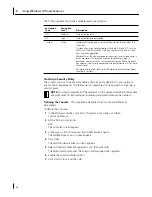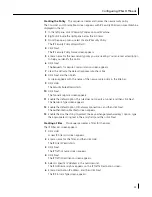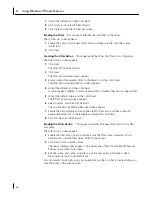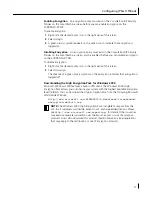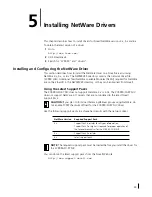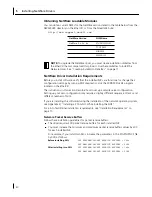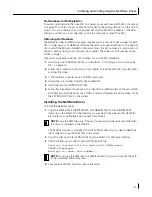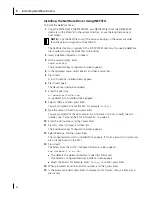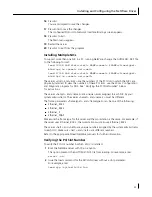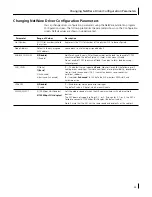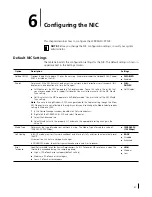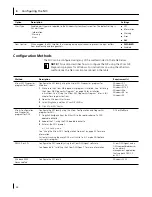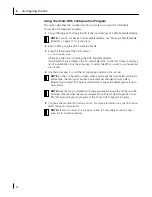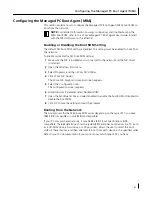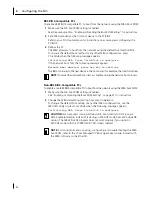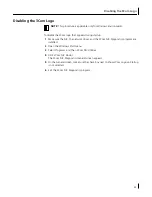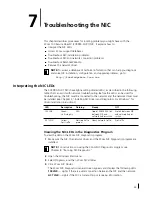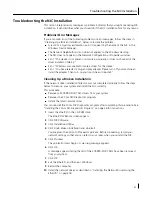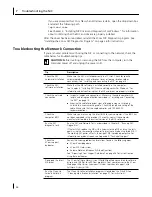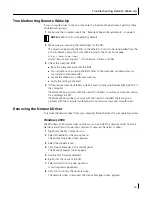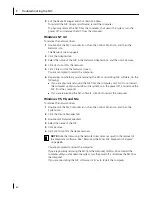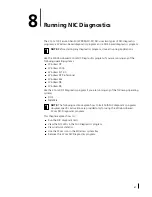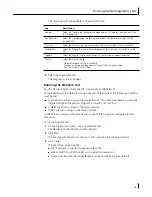
6
Configuring the NIC
48
Configuration Methods
The NIC can be configured using any of the methods listed in the table below.
Alert Type
Enabled alert types are reported to the Windows System Events monitor. The default setting is
ALL alert types:
- Information
- Warning
- Error
■
Off
■
Information
■
Warning
■
Error
■
ALL
Flow Control
When enabled, the NIC throttles the incoming data packet stream to prevent the input buffers
from overflowing and losing packets.
■
DISABLED
■
Enabled
Option
Description
Settings
NOTE:
This section describes how to configure the NIC using the 3Com NIC
Diagnostics program for Windows. For instructions on using the other two
methods, see the file or section mentioned in the table.
Method
Description
Requirement(s)
3Com NIC Diagnostics
program for Windows
Configure the NIC locally using the 3Com NIC Diagnostics program for
Windows:
1
Make sure the 3Com NIC diagnostics program is installed. See “Installing
the 3Com NIC Diagnostics Program” on page 26 for installation
instructions. See “Using the 3Com NIC Diagnostics Program” later in this
chapter for usage instructions.
2
Open the Windows
Start
menu.
3
Select
Programs
, and then
3Com NIC Utilities
.
4
Click
3Com NIC Doctor
.
Windows XP
Windows 2000
Windows NT 4.0
Windows Me
Windows 98, or
Windows 95
3Com Configuration
and Diagnostics
program for DOS
Configure the NIC locally using the 3Com Configuration and Diagnostics
program for DOS:
1
Copy 3c99xcfg.exe from the
EtherCD
to the root directory of a DOS-
bootable diskette.
2
Reboot the PC using the DOS-bootable diskette.
3
Enter at the DOS prompt:
a:\3c99xcfg.exe
See “Using the 3Com DOS Configuration Program” on page 50 for more
information.
Customers running Japanese DOS must switch to U.S. mode DOS before
running this program.
DOS or NetWare
DMI 2.0 or 2.0s
Configure the NIC remotely using the 3Com DMI Agent software.
See Appendix B, “Installing the 3Com DMI Agent” for more information.
3Com DMI Agent and a
DMI-compatible browser
or a network
management application
that supports DMI 2.0
or 2.0s
Windows 2000
Advanced Tab
Configure the NIC locally.
Windows 2000

